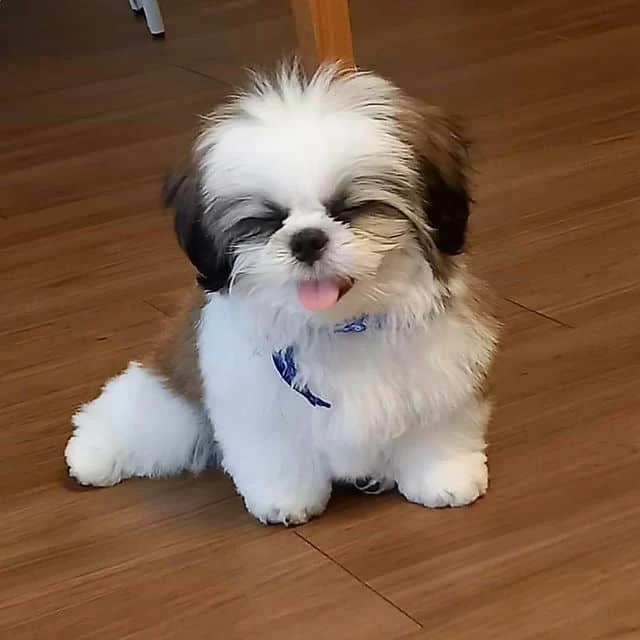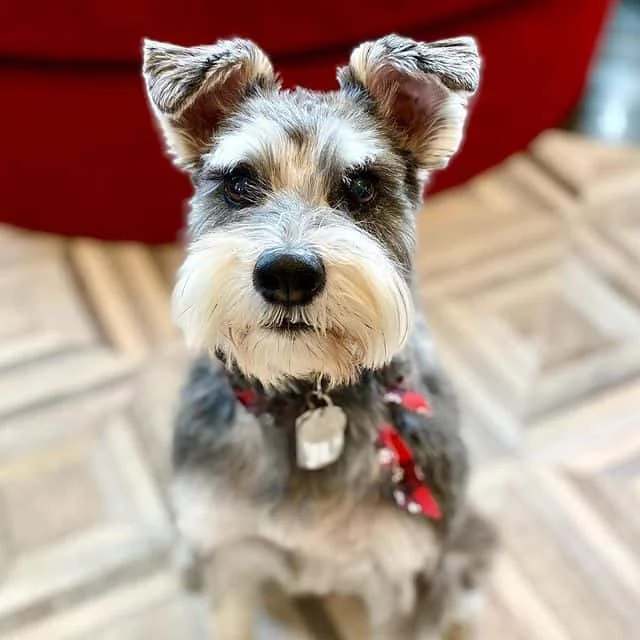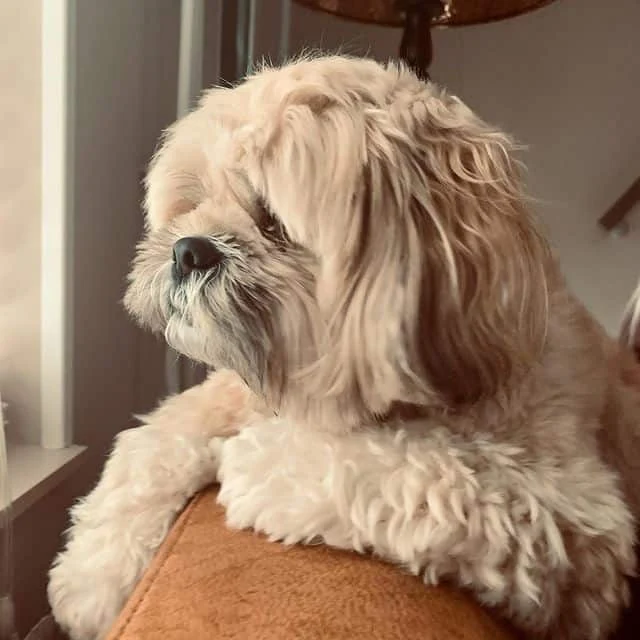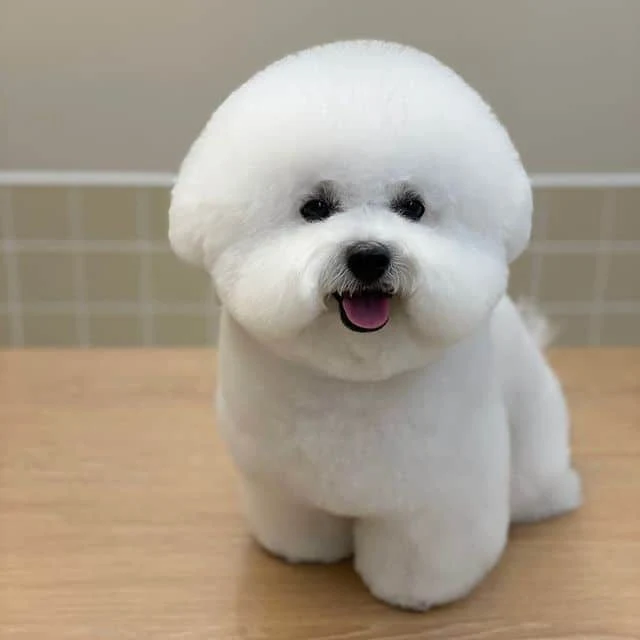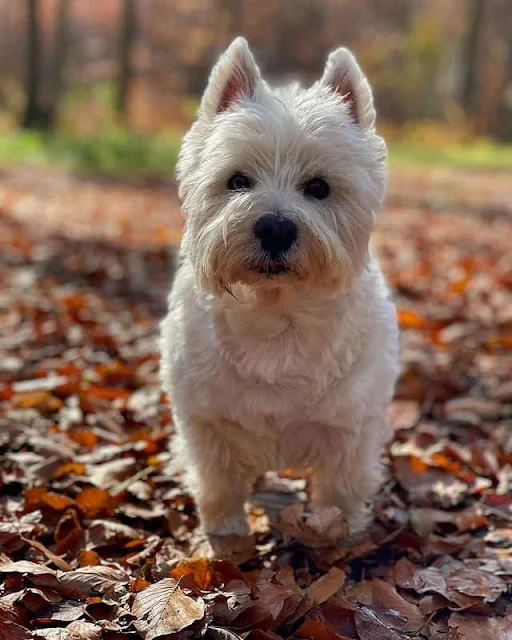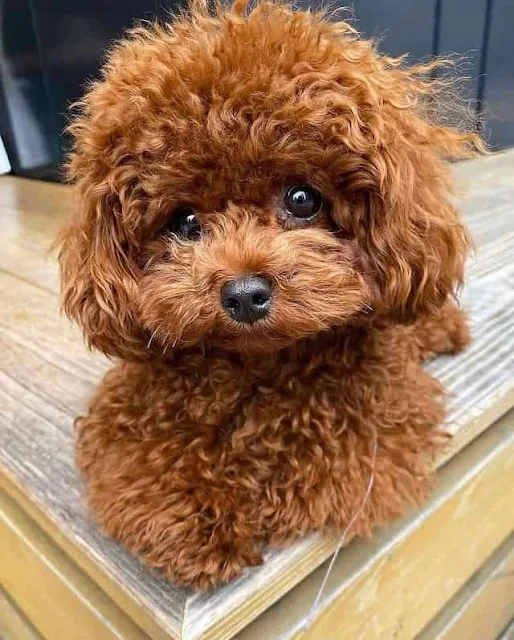In this article I will tell you everything you need to know about small dog breeds that do not shed hair and are mostly allergy-proof.
owning a dog goes hand in hand with huge responsibility. And as much as you would have people believe, it is not a job for everyone. You have to take him for walks, play with him, feed him and educate him. Of course, we must also take care of his health and hygiene, both for his comfort and ours. That is why at least a great part of the people decide not to adopt or have a dog. One of these reasons is precisely hair loss.
Owners get tired very quickly of sweeping, picking up, or cleaning the amount of hair shed by their beloved pets. But there is no need to get angry with them. This is a natural process performed by a good portion of mammals. Even us. In this group we must also consider people who are allergic to dogs, who flatly stay away from the idea of owning a companion because they would not last a whole day without suffering from their allergy.
It should be clarified that unless your selection is a completely hairless dog, all dogs will shed hair to a greater or lesser extent. Of course, for your convenience, this time we will talk about the latter. Small dog breeds that shed almost no hair. Or at least it is not so noticeable. With this, we add that not necessarily dog breeds with short hair shed less hair. Contrary to popular myth, these are the breeds that can shed the most hair. And finally. Owning one of these breeds does not imply that it is suitable to live with people who have a severe allergy. While it is tolerable in most cases, it is not recommended at all.
The hair will go. The responsibilities will not
Indeed, with the small dog breeds that shed almost no hair that we are going to show you below, the annoying chore of picking up hair every week or every other day disappears almost completely. But, this responsibility is replaced by something else. Generally, you should take care of their coat. Comb it frequently, clean it well, and give it regular trims. And the case is similar for completely hairless dogs. Their skin must be taken care of so that they don't get sunstroke or become ill.
If you are looking for a breed to avoid these responsibilities, it is not advisable to choose these breeds. You will notice this throughout our selection. However, do not let this limit your choice. Many of these breeds are worth all the effort that is required. At the end of the day, what really matters is having a companion by your side who will love you unconditionally and be completely happy to do so. This is the main reason why we love these little friends,
Small dogs that don't shed
As we mentioned earlier, dogs that shed little are not necessarily those with short hair. This is somewhat ironic to a certain extent. Most of them have abundant fur and require particularly intense care, including combing, frequent clipping, and a lot of hygiene. That said, here is our selection of breeds that shed very little hair.
Shih Tzu
Shih Tzus are affectionate and loyal and they get along very well with children, especially in urban areas. They require a moderate amount of exercise, which makes them excellent companion dogs for families. They are also very intelligent, and their socialization will not present any problems, both for other people and other dogs.
Schnauzer
Amistosos y leales. Excelentes como perros guardianes por su alto nivel de inteligencia y atención. Tienen un pelaje áspero y pelo fino. Por eso es muy raro que pierdan pelo, aunque su aseo debe ser constante para evitar malos olores y enredos. Los dueños de estos amigos a veces deciden cortarles aún más el pelo, dejándoles sólo las cejas, el bigote o la barba.
Son valientes y algo territoriales. Pero con una buena educación y socialización no tendrán problemas para adaptarse a un entorno. Son muy juguetones y se llevan bien con los niños. Les gusta caminar mucho para mantenerse en forma.
No le quites el bigote ni la barba. Es su estilo personal.
Lhasa Apso
Originally from Tibet, the Lhasa Apso is a very particular dog breed. Their coat is extremely long, so it must be combed very carefully and frequently. In addition, their bathing needs to be constant, avoiding bad odors and tangles that can be painful and annoying for the dog. Similar to the Shih Tzu, owners may choose to cut their coat very short. Although this takes away their main distinction from other breeds. Incredibly, they shed almost no hair.
They are affectionate and very friendly; they work as watchdogs and good companion dogs. Their intelligence allows them to have no problems in adapting to the environment in which they find themselves. So, they get along very well with other animals and people.
Cairn Terrier
They are usually known for their seriousness. They are loyal and intelligent and seem to be always focused on what they do. They are excellent workers, guardians, and companion dogs. With good training and dedication, they can socialize quite easily with other dogs.
A small, bearded, Scottish breed of dog.
Yorkshire Terrier
Intelligent, charismatic, and full of life are usually the best qualities to define it. They are very sociable with other dogs and people. Although they are usually on alert with strangers at first, so they are excellent watchdogs. Previously, this was their main function, to alert of dangers and threats with a series of constant barking. They like to play and crave attention. They get along well with children and can adapt quickly to any environment. This makes them a favorite with families.
Bichon Frise
They are characterized by their joy and great energy. They are excellent playmates because they are so active and full of life. With good training, they can also make good guard dogs. They are extremely intelligent and charismatic so they quickly gets along well with other animals and dogs.
Maltese
They are educated, intelligent, affectionate, and full of life. They are very energetic and playful. Excellent as companion dogs, they get along very well with the children of the house, so they usually belong to the selected group of breeds preferred by families. In spite of this, they tend to be somewhat jealous and stubborn. Although it is not a problem that cannot be solved with a little training and education.
Small, adorable, and affectionate. But jealous.
Westie - West Highland White Terrier
The Westie originates from the West Highlands of Scotland. This is also the origin of their name (West Highland White Terrier). They have a dense undercoat which gives way to a rough outer coat. Their coat requires constant care and maintenance. Grooming and combing, just like the other breeds we have discussed. However, Westies are also prone to skin problems, so it is important to check them frequently to treat any rashes that may occur.
Brave, full of enthusiasm, energy and affection. Although they were used as hunting dogs, chasing rodents and small animals. Nowadays they are very much loved as watchdogs, thanks to their constant state of alarm and their loud bark. And of course as companion dogs. They are very intelligent, but become quite stubborn and proud, so their training must be a priority to establish order and hierarchy in the house.
Adorable, but stubborn.Read also: WESTIEPOO: A CHARMING DESIGNER DOG FOR ACTIVE FAMILIES
Dachshund
Also known as the Teckel, originally from Germany, it is the most well-known breed on our list. Its particular shape gives it a curious aura, with its legs much shorter than its body. Although it seems not to be good at physical activities due to its physiognomy, it was widely used in hunting, as a tracker and hunter respectively. Brave, intelligent, and hardworking are the qualities that define him.
Look at him. It's inevitable not to be attracted to his adorable shape.
Among the variations we're currently interested in are those without hair and those with a small amount of hair. In both cases, skincare is required to avoid sunburn and rashes. This breed presents a series of health problems concerning the spine and can easily suffer injuries, as well as be highly affected by obesity. Care should be taken with the intensity of their exercise. Nonetheless, they are agile and fast dogs. With proper care and training, the risk of any diseases is reduced.
Havanese
As its name indicates, it is originally from Cuba. It is the national dog. It is mainly a companion breed. They are very playful dogs and good with children and senior citizens. They are easy to train and are always alert to everything. Affectionate, cheerful, playful and friendly are the words with which they are usually defined. They are somewhat shy, slow to get along well with strangers, but it is not a problem that cannot be solved with training and education. From which they learn extremely fast. In fact they are used as therapy dogs for people with disabilities.
The taste of the Caribbean compacted in an adorable friendly friend.
Their coat is silky, long, fine and soft. Although there are variations where it is fluffy and silky, it must be constantly cared for, combed, and washed just like the rest of the breeds we have shown, but with a quite noticeable difference. The Havanese is a hypoallergenic breed, making it an ideal choice even for the most allergic. It is somewhat prone to a few diseases, but with a regular vet visit, healthy diet and constant exercise it is nothing to worry about.
As the name might lead you to infer, it is of United States of America origin. They are friendly, cheerful, and playful. They require education or training so that they do not have any problems when socializing, and can get along well with other animals in the house or strangers. They are used as guard dogs and for canine competitions. But their position as a companion dog is privileged, as they can get along well with little ones in the house.
Perfect for those who want love without much hassle.
Unlike other breeds we have seen, the Boston Terrier is easy and quick to maintain. However, despite its short coat, it should be brushed regularly to keep it healthy. It should be bathed at least once a month to avoid dandruff, but its hair loss is almost unnoticeable. For those not convinced with regular grooming and daily combing, this breed is a great alternative. This breed is a fantastic option for those who aren't big on grooming.
Poodle
Also known as Caniche, the breed of German origin was once considered only for the noblest. Nowadays, it is well-known for its participation in beauty contests and as a good pet. There are several size varieties of this breed, ranging from large to toy. This is the main reason we included it on our list.
Thanks to its fluffy and thick fur, it avoids shedding, at least for the most part. And that attracts designers or dog groomers to try different styles of haircuts with this breed. That is why it is popular at dog shows. Their coat requires weekly grooming, just like the other breeds we have discussed.
They are considered one of the most intelligent and easy to train dog breeds. They are cheerful and energetic, with great concentration in what they do. They are excellent with children and living with other animals, with good training and education. They are also good as watchdogs and hunting dogs, thanks to their agility and attention.
It is an extremely intelligent cuddly toy. All in one.
Related: 10 Fascinating Facts About French Poodle
Indispensable tips for allergy sufferers looking for a hypoallergenic dog
As mentioned above, these breeds shed very little hair, as a coat change is normal among dogs, unless they lack it. And that is why for most people these breeds will be a relief since they will not have to pick up large amounts of hair or clean the house constantly. Although we mentioned that some of these breeds are hypoallergenic, before you decide to adopt or buy one of these dogs, we ask you to take into consideration this series of factors so that your coexistence with the animal will not be problematic for your health.
What is your type of allergy?
Although most people believe that the coat is the factor that causes allergies, this is not at all close to the truth. Allergies are an overreaction on the part of the immune system, which makes you hypersensitive to certain things and causes a series of processes in the body that range from annoying to downright dangerous.
Allergy to dogs is rare compared to other animals, and as we mentioned, it is most commonly related to the animal's coat. But allergies can also be expressed against urine and saliva. Someone may experience a strong allergic reaction on their skin and, on a smaller scale, may also be allergic to dander and dead skin flakes. Therefore, a dog without fur may not be of complete help to these people.
We recommend being clear about the reason for your allergy so that you can adopt or buy the dog of your choice without fear of how your body reacts to it. You should also take into account the intensity of the allergy, establishing how tolerable you can be with an animal. It is advisable to live with an animal separately, and depending on how it turns out, you may decide to adopt one of your own.
What space are you in?
This is important, you must take into account the environment in which you live and therefore your pet will live. Things like how well ventilated the space is or how large it may be. They reflect how often you can have an allergic attack in case your tolerance level is lower than average.
That is, if you are allergic to hair, but you have a certain degree of tolerance, you decide to adopt one of the breeds we have mentioned and you live in a ventilated and spacious area. There isn't much to worry about. However, if your space is small and lacks proper ventilation, you may have a tough time with your new pet, and you may even find it necessary to not live with them anymore.
While these breeds are usually small and can coexist without issues in small spaces, it depends more on your reaction to what triggers allergies than anything else. And it is something that should not be taken lightly, considering that it is not only your life that is affected but also that of the animal in question.
What symptoms do you suffer from, and can they be controlled?
Establish the symptoms you suffer from, so that you can create a system to prevent them from affecting you too much to risk or live with one of these dogs. There are allergic symptoms that while not lethal, are quite annoying, and can be solved with a simple medication and even a quick rinse. It will be up to you and how you evaluate your allergy situation to decide whether to have one of these pets or keep it with you.
The most common symptoms of allergy sufferers are:
- Nasal congestion
- Runny nose
- Itchy nose
- Sneezing
- Watery eyes
- Coughing
- Sore throat
- Fatigue
- Asthma
- Difficulty breathing
As you can see, we have marked with bold letters the serious symptoms. We consider that if they occur, it is better not to live with animals that cause them, since your life may be at risk unnecessarily. On the other hand, the first ones are symptoms that although they are quite annoying, you can live with them with a good medication or precaution. Of course, all this will depend on how you evaluate the situation when acquiring a tender friend.
In case you are wondering, the estimated reaction time is approximately 5-30 minutes. It varies depending on the intensity of the allergy and the person themselves. Enough time to find a medicine or allergy medicine that works for you. And also to evaluate your own level of tolerance with these animals. If your reaction is minimal over a longer period of time, it is likely that you do not have serious problems with their coexistence.
Consult your trusted doctor
However, before following all of this to the letter, we consider that, among other things, you continue to get information about the breeds we have mentioned, and of course, about your allergy in question or the people close to you. The best thing to do is to look for experiences of people who are also allergic and how they have managed to coexist correctly with their furry companions.
And of course, talk to your doctor. He will tell you all the possible scenarios that may arise and how this will affect your family. He or she will also help you figure out how to prevent the worst things and keep annoying symptoms at bay. Don't self-medicate, seriously, don't do it. Don't put your health or the health of a loved one at risk completely unnecessarily. While we all love these cuddly creatures, you have to understand the limitations you have. Maybe you can even find another animal companion.
Beauty and hygiene
Must be kept in mind. Not only with these dog breeds that we have already discussed, but with all, it is very important to properly maintain the hygiene of the space we share with our four-legged companions. This not only avoids bad odors and problems in cleaning the house, but it is also relevant for our health and that of our furry friend.
If you could notice, there is a characteristic that is common among the breeds we have discussed, which is that when the frequency of shedding decreases, it becomes important to brush and clean their coat regularly. Even if their fur is kept short, it is necessary to take care of their skin. Therefore, it is advisable to use creams or sunscreens to prevent rashes and burns. These issues may also occur to a lesser extent with other breeds that shed hair.
Especially the former if they are breeds with imposing coats. Brushing the coat is not a waste of time and is really necessary at least once a week to keep it in a healthy condition and thus keep it shiny and comfortable for the animal. This is also influenced by feeding and exercise that should never be lacking.
And in conjunction with this is the discipline. Training and exercise to maintain good health. All these factors clearly influence the beauty of the animal. It is not necessary to take this into account in a separate way. Although the images and examples we see of these breeds may seem very attractive and adorable, we have to recognize that all this requires a lot of care and attention from their owners.
We must remember that having a pet doesn't only mean love and good times you can spend with them. It also implies a good dose of discipline and responsibility on the part of the owner. With this in mind, we assure you that no matter the breed or the problems that arise, you will have an excellent friendship with a little one that will not abandon you and will love you unconditionally like any other dog.
We can only say as a summary. Don't take any risk regarding allergies, consult your doctor. And take into account all the factors that come with the adoption and care of one of these dog breeds.
Small and cute. But a great burden of responsibility.


